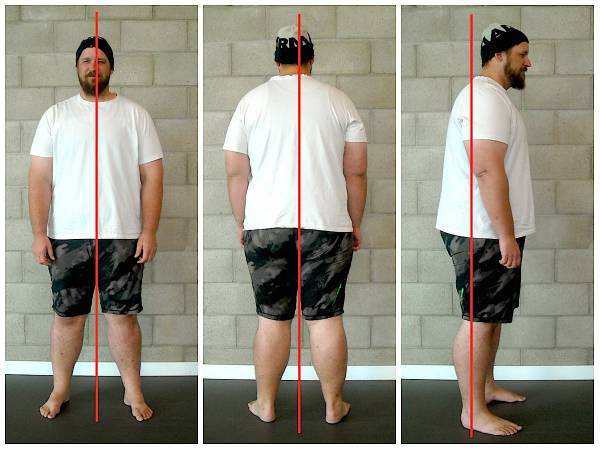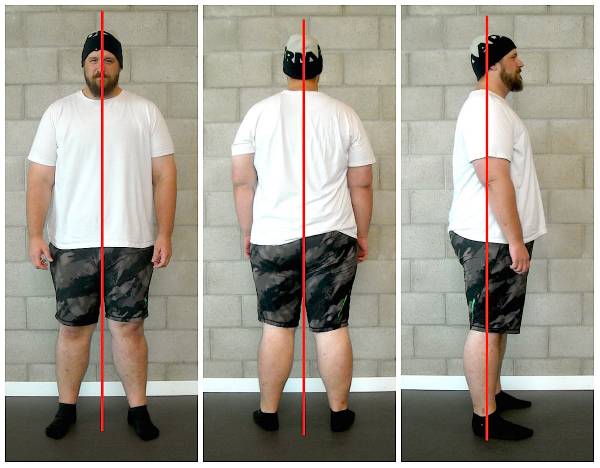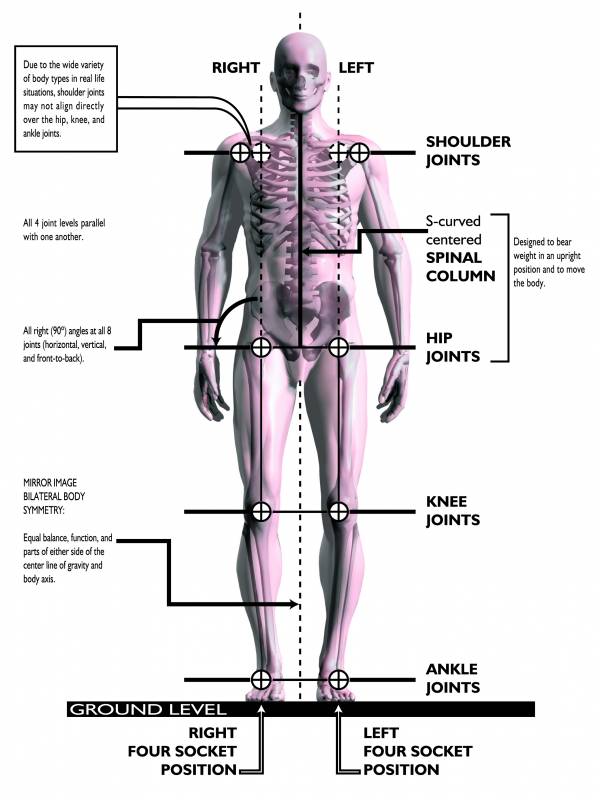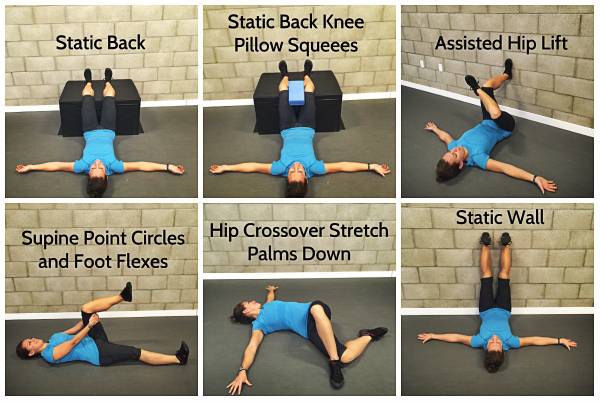People come to me to help them deal with pain all the time. They usually want to reduce the cause of their pain to one specific event or a specific muscle that is tight or weak. However, there’s a little more to it than that.
People come to me to help them deal with pain all the time. They usually want to reduce the cause of their pain to one specific event or a specific muscle that is tight or weak. However, there’s a little more to it than that.
Starting at around age four, we shift from moving constantly to sitting in school for the majority of the day. As we progress through grade levels and the academic demand becomes greater, we sit more and more. Once we graduate, our jobs often involve sitting at a computer. By the time we are in pain, there is much more going on than just one tight muscle here or there. The entire body is compromised and not functioning properly.
Unfortunately, the majority of today’s pain-relief efforts and models focus on the pain itself and only address the area of the symptom. These models are not effective in most scenarios of addressing chronic pain.
In this article, through the use of a case study, I will show you an example of ignoring the site of the pain, and instead addressing the root cause. But first, we must review some basic principles of physics. I will discuss the relationship between physics and pain, as well as how to get physics to start working in your favor instead of against you.
The Enemy Called “Compensation”
We can always depend on the force of gravity. Gravity falls perpendicular to the surface of the earth, and any and all structures must react directly in opposition to that force in order to hold position and move effectively.
If the base of one of the poles were to come loose, the entire structure would become unstable.
This Rogue rack at my gym is a perfect example of a structure that is build to resist gravity. As you can see, its stability relies on the vertical and horizontal alignment of the adjoining intersections of screws and bolts. The poles intersect with the floor at 90-degree angles. If the base of one of the poles were to come loose and move a few inches, the entire structure would become unstable, and you most likely would hesitate before jumping up to practice some kipping pull ups.
Just like the Rogue rack, the human body needs to resist gravity in order to stand upright and move. The problem with our bodies is that when we do not apply a reaction to the force of gravity in a constant and equal way, then our bodies, just like any structure, are forced to adjust. This is otherwise known as compensation.
The human body has eight major load bearing joints:
- Shoulders
- Hips
- Knees
- Ankles
These joints are designed to stack horizontally and align vertically in relationship to each other. Just like the Rogue rack, each joint forms a 90-degree angle when properly aligned.
When the musculature of the human body is asked to move constantly in all three planes of movement (transverse, frontal, and sagittal) the structural integrity of the 90-degree angles and joint alignment is maintained. Muscles begin to change length and tension when movement is intermittent or scarce. The skeletal alignment begins to lose its integrity and stability due to compensation, and eventually pain sets in.
When the musculature of the human body is asked to move constantly in all three planes of movement, structural integrity is maintained.
A Study in Common Compensations
Enter Joe. Joe’s initial posture pictures provide us with examples of common compensations. When Joe came to see me he had recently committed to an aggressive weight-loss program that involved high-intensity physical activity, but he was limited in the activities he could perform due to knee and back pain.
When I assessed Joe, I asked him which activities aggravated his knee the most. He proceeded to replicate his knee pain by getting into the bottom of a lunge. He was not able to push himself up out of this position, due to pain and weakness in his left knee.

Front view (left); back view (center); right side view (right).
Let’s put the back and knee symptoms aside and have a look at Joe’s posture. Some of the misalignments that we can see in Joe’s photos are the following:
- In the right side view, Joe’s ear lobe is significantly forward of his shoulder joint. The ear lobe is supposed to stack directly over his shoulder.
- In the back view, Joe’s right shoulder sits higher than his left. The inferior borders of the scapula are supposed to be level.
- In the front view, Joe’s knees cave in, which is also known as valgus knees. The hip, knee, and ankle joints are supposed to stack in a straight line.
Instead of focusing on Joe’s areas of pain and giving him exercises to address those areas, I focused on moving Joe’s body into a better position by restoring the vertical and horizontal lines and 90-degree angles at his load-bearing joints. I accomplished this by having Joe perform the following exercises:
- Static Back
- Static Back Knee Pillow Squeezes
- Assisted Hip Lift
- Supine Foot Circles and Point Flexes
- Hip Crossover Stretch – Palms Down
- Static Wall
These exercises achieve better positioning by restoring optimal angles at load-bearing joints.
After performing the exercises listed above, which took about an hour, I re-took Joe’s photos and we re-tested the lunge. Joe was able to easily perform multiple repetitions of the lunge with significantly less pain or weakness.
Note: Keep in mind that these are not “knee pain exercises” and they are not necessarily the exercises you should do if you have knee pain. Remember, I am fixing Joe’s knee by fixing his posture, not by focusing on his knee specifically. If I were to place Joe next to ten other people with knee pain, they would all have different posture, and thus need different exercises to correct their posture.
Small Changes, Big Results
Here are Joe’s after photos:

Front view (left); back view (center); right side view (right).
The areas that showed the most noticeable improvements were Joe’s head position from the side and his shoulder position from the back. A more subtle, but still important, change was the improvement in the alignment of Joe’s lower legs.
Joe now needs to continue to perform these exercises on a daily basis in order to stabilize the results. I will meet with him for a follow-up visit next week, and we will revise his exercises based on the changes in his posture.
Get Physics on Your Team
Now, the question is, how do you get physics to start working in your favor and not against you?
- First, correct your alignment. Trying to train harder and be more active on top of skeletal misalignments will only perpetuate compensations.
- Once postural balance is restored, the name of the game is to stay active and move as much as possible in as many different ways as you can. Think back to when you were a kid. Run, jump, crawl, hop onto things, jump over things, and get down on the ground and get back up again.
Thank you for taking the time to read the article. Next time, I will outline five fundamental postural exercises, how they work, and how to do them properly.
More Like This:
- Banish Pain Permanently: 3 Self-Assessment Tools
- Banish Pain Permanently: Correct Your Alignment
- Understanding the Brain is the Key to Being Pain Free
- New on Breaking Muscle Today
Photos 1, 3, and 4 courtesy of Maryann Berry.
Photo 2 courtesy of Egoscue.
Headline image courtesy of CrossFit Empirical.








